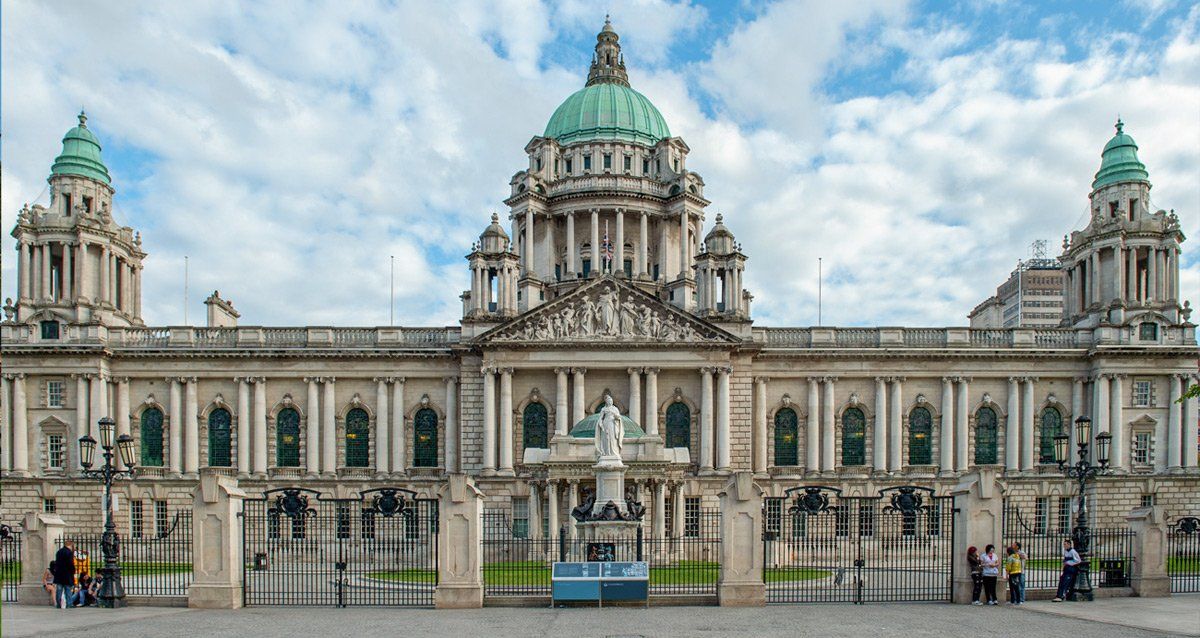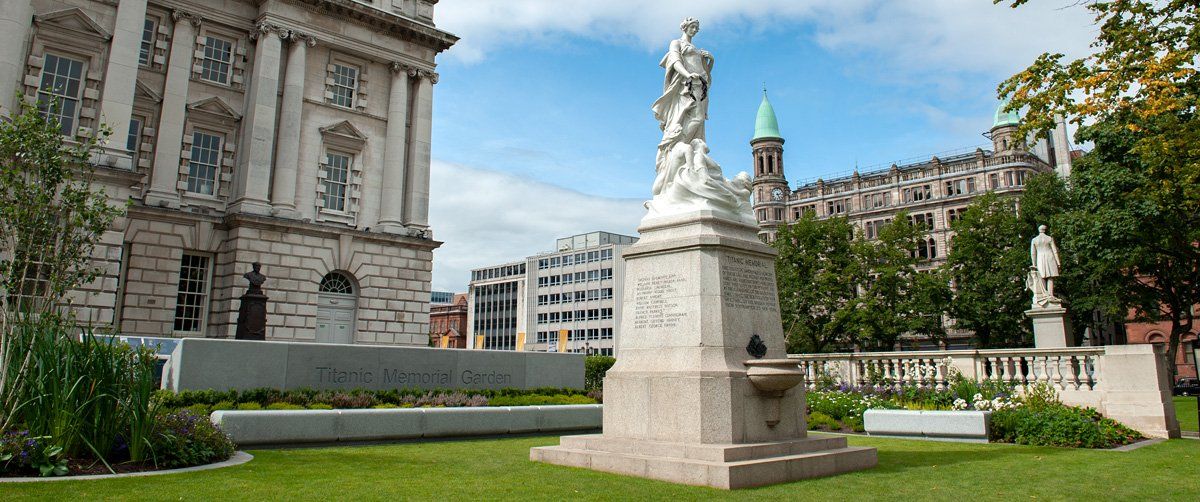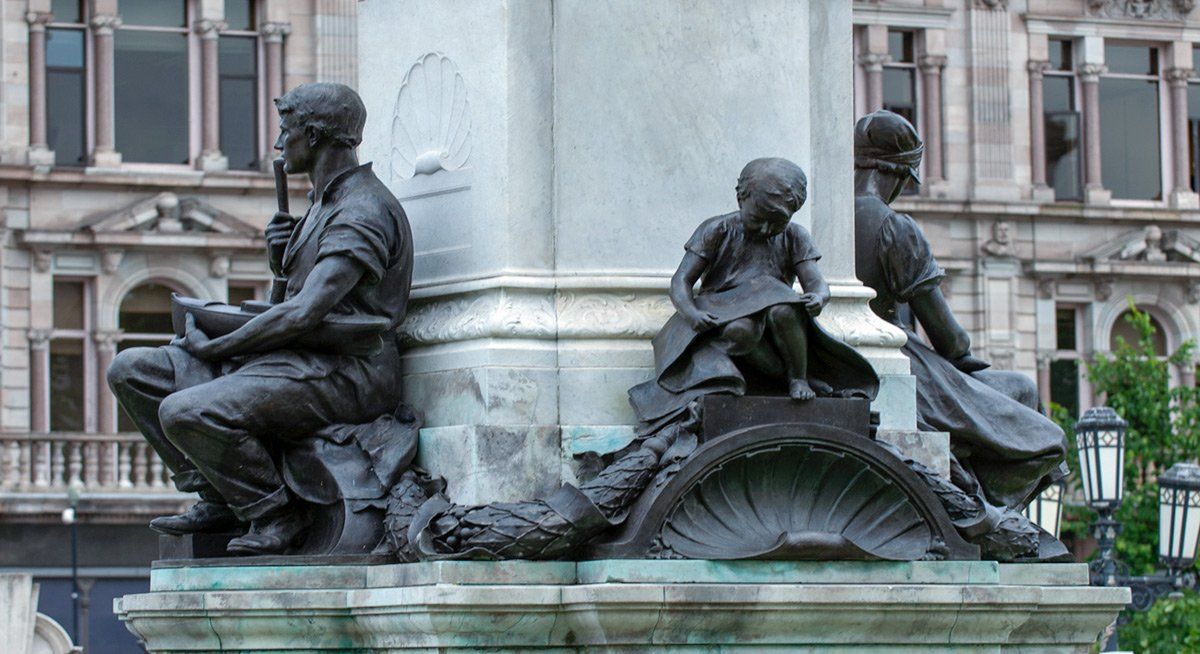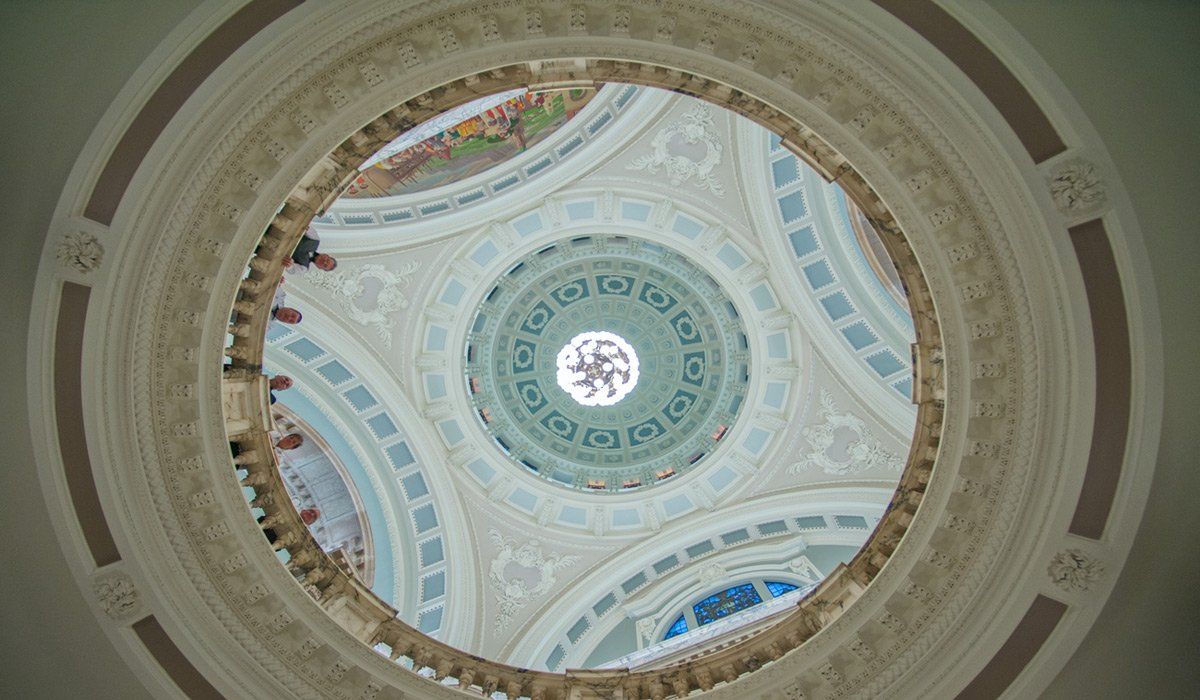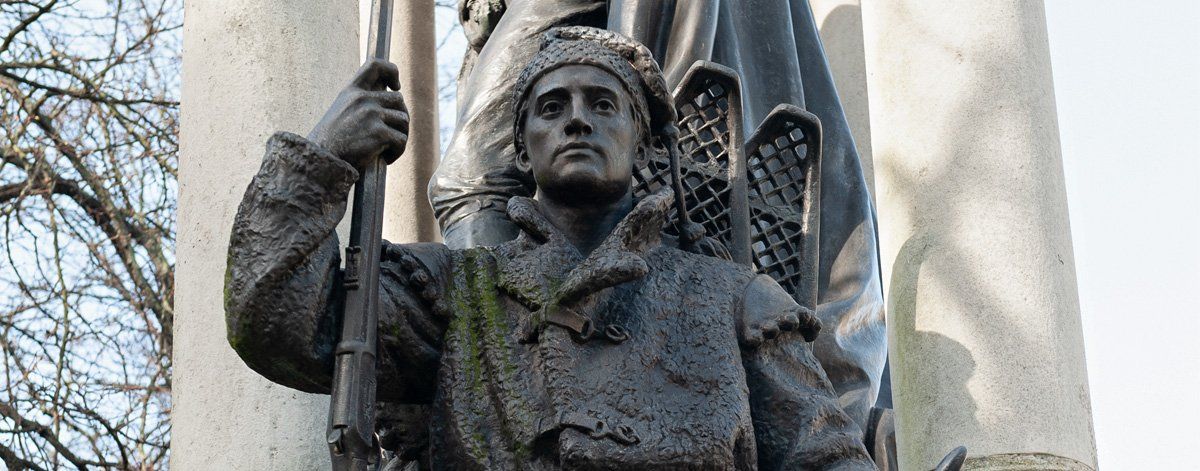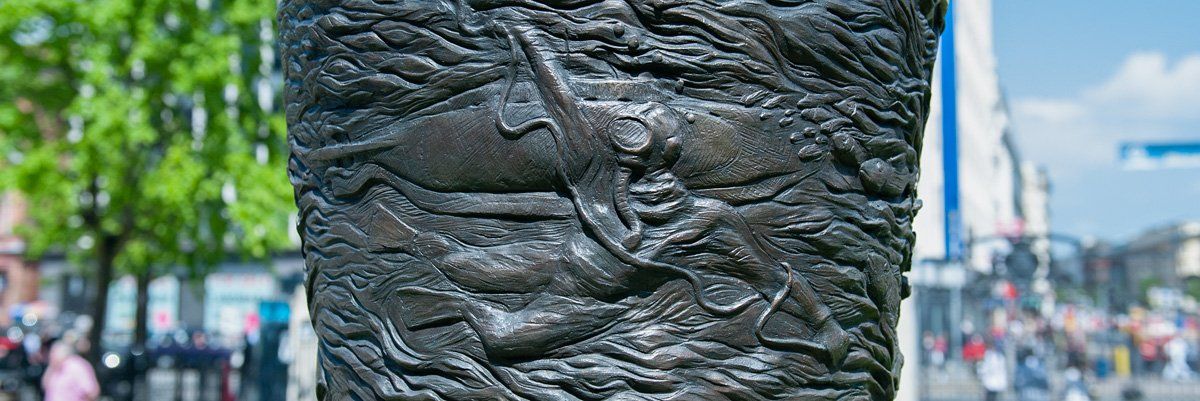Belfast City Hall
City Hall is an impressive building and free to visit, it was built in 1888 to commemorate the granting of city status by Queen Victoria, in recognition of Belfast's cities contribution to the Victorian Empire through the linen, rope, engineering and maritime industries. The classical renaissance style was designed by Sir Brumwell Thomas and constructed between 1896 -1906, at a cost of £369,000. It is rectangular with an inner quadrangular courtyard constructed from Portland stone, the 173 feet high copper capped dome and whispering gallery were inspired by St. Paul’s Cathedral in London. Brumwell Thomas also designed the Cenotaph and Memorial Garden at the side of the building which was unveiled on Armistice Day in 1929.
The internal foyer is stunning in its opulence with a grand stairway and circular first-floor balcony with an impressive view from the foyer to the dome. The interior was built from a selection of the Italian marble: Cararra, Pavonazza and Brescia which are complimented by colonnades of Greek marble. The interior is enhanced with paintings, stained glass windows and sculptures. Below the ornate dome, there is a mural by the Belfast artist John Luke (1906 -1975). City Hall is set in one and a half acres of ground consisting of lawns, pathways and seating interspersed with numerous sculptures and memorials. The large pediment sculpture was created by F. W. Pomeroy whose work includes 'Justice' on top of the Old Bailey in London and the sculpture of W. E. Gladstone in the Houses of Parliament. Local sculptor Edgar Winter assisted with the pediment which is featured on the back of the Northern Bank £10, £20, £50 and £100 notes.
Pomeroy also created the exceptional memorial to Lord Dufferin, at the side of city hall facing the Scottish Provident Building. This has three figures, one of Lord Dufferin standing in full regalia with two guardian figures representing his posts, one as a Turbaned Warrior (India) and the other a Trapper/Hunter (Canada). The impressive sculpture of Queen Victoria at the front was created by Sir Thomas Brock RA to celebrate her jubilee and was carved from Sicilian marble, the eleven-foot sculpture depicts the Queen as the regal ruler of the Empire, around the lower facade are three exceptional bronze figures which represent shipbuilding, the linen industries and education. The sculpture was unveiled by King Edward VII in July, 1903.
Thomas Brock also created the Victoria Memorial outside Buckingham Palace and was commissioned to create the ‘Thane’ Memorial to the Titanic located at the side of City Hall. A magnificent, haunting piece of work which was unveiled in 1920. The ‘Thane’ depicts a female 'mercy' figure holding a laurel wreath overlooking two sea nymphs lifting a drowned seaman from the ocean. It combines both detail and fluid motion, Brock died in 1922 before the piece was complete, in his will he entrusted the completion of the work to Frank Arnold Wright (1874 - 961). The sculpture symbolically faces towards the shipyard where Titanic was built and is inscribed with the names of the 22 men who lost their lives in the tragedy, each one significant to the Titanic’s legacy.
Originally the sculpture was at the top of Royal Avenue but it became a traffic hazard and was moved to its present location in 1960. In 2012, the centenary of the tragedy, a memorial garden was created behind the sculpture which contains the names of all those who lost their lives on the Titanic. Walking around the grounds you will find other sculptures in both stone and bronze including the fabulous memorial to the Boer War with its beautiful miniature bronze figures on the four corners of a plinth carrying the figure of a Boer soldier. Other sculptures commemorate Sir Edward Harland - founder of Harland & Wolff, James Horner Haslett - Mayor of Belfast and Conservative politician, Sir Daniel Dixon - Mayor of Belfast and Unionist politician, William Pirrie - Mayor of Belfast and Chairman of Harland & Wolff and Robert James McMordie - Mayor of Belfast and Barrister who helped form the Young Citizen Volunteers of Ireland in 1912.
There is also a memorial to the American Expeditionary Force, the first American troops to arrive in Europe in 1942. Another marks the bravery of James Magennis VC who took part in a successful and daring raid by a midget submarine to sink Japanese battleships at Singapore during the Second World War. A recent addition was the Korean War 'Imjin River' Memorial which was moved here in 2008 after the army barracks in Ballymena closed, it was originally in Korea as a memorial to those who were killed in the conflict and is the only memorial in Ireland to those lost in the Korean War. The City Hall and grounds are is free to enter, there are also guided tours available and a cafe. For more information follow this link: Visting Belfast City Hall

